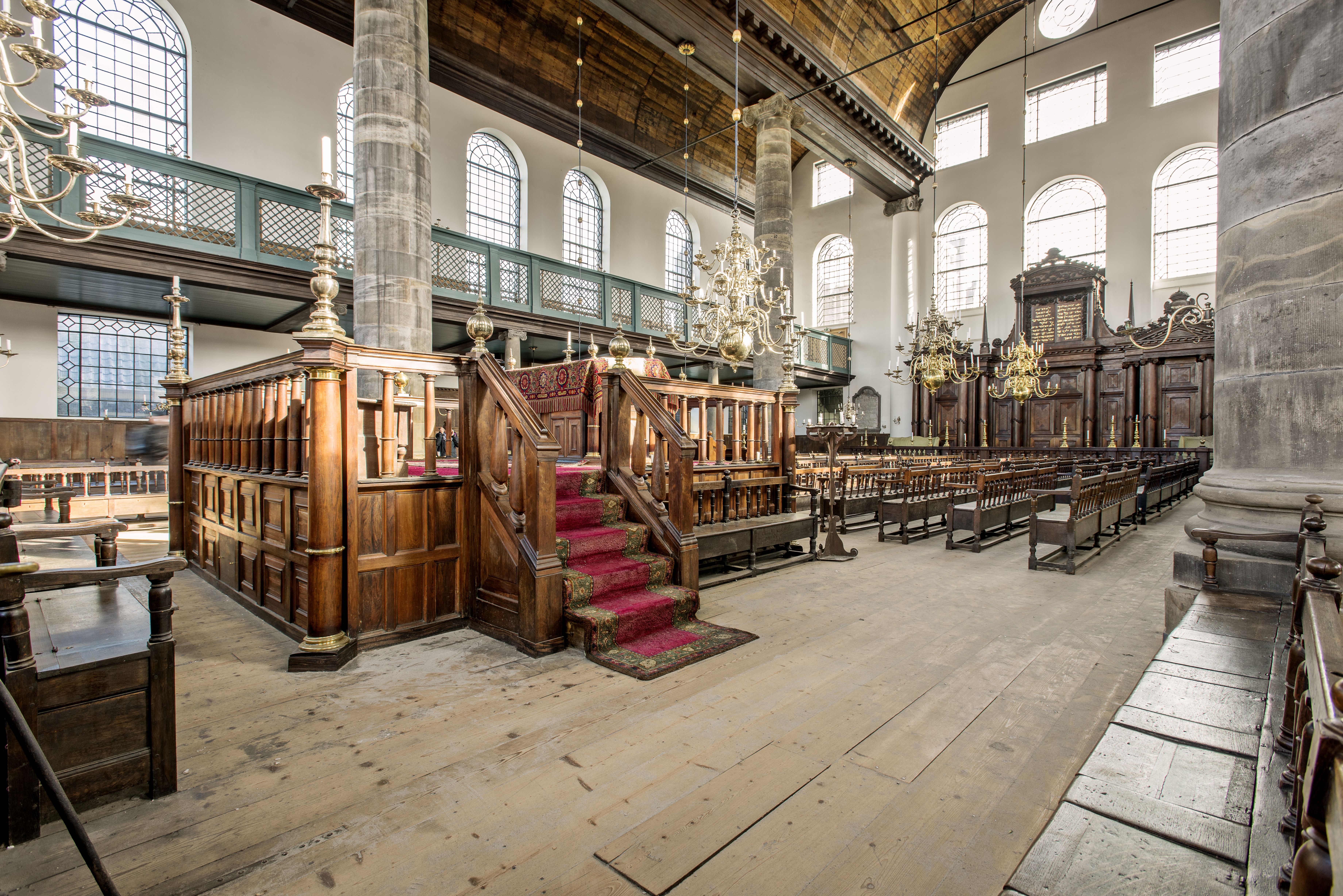The cemetery of the Portugese Jewish community, Beth Haim, or House of Life, is located in the small town of Ouderkerk aan de Amstel, near Amsterdam. For almost four centuries, the community has been burying its members here. The cemetery encompasses 28,000 graves, the Vega House (caretaker’s house) and the Rodeamentos House. The cemetery is preserved in its original state.
The Sefardim who started arriving in the 16<sup>th</sup> century first built a synagogue, their second priority was a cemetery. Initially, the City of Amsterdam, refused to grant permission for building a Jewish cemetery, which meant that the community buried its dead in Groet, about 50 kilometers from Amsterdam. In 1614 permission was granted and the community bought its first plot. In 1690 and 1691 additional land was bought.
In the Golden Age in particular, many splendid marble memorial stones with elaborate carvings and inscriptions were placed. The cemetery, which is about four hectares in size, is the final resting place of many prominent rabbi’s, diplomats and scientists, such as Rabbi Menashe ben Israel who together with Rabbi Jacob Sasportas, pleaded with Oliver Cromwell to allow the Jews to settle in England on philosophical and theological grounds. One of the most impressive tomb stones is that of Eliahu Montalto, personal physician to Maria de Medici. His grave was painted by Jacob van Ruysdael amongst others.
In the centuries that followed most tomb stones have sunk into the ground. In the 19th century David Henriques de Castro, a prominent member of the Portuguese community, catalogued and restored part of the cemetery. He raised some of the tombstones and used bricks to hold up the most important and beautiful ones. In all, he dug up and catalogued 6,000 tombstones. He spent 14 years restoring the cemetery. De Castro documented his restoration and research in Keur van Grafsteenen op de Nederl. Port. Israel. Begraafplaats te Ouderkerk a/d Amstel, still the most authoritative work on Beth Haim.
In 1923, Beth Haim neared full capacity. Because Jewish law forbids the exhumation of the dead, an old part of Beth Haim was covered with earth to create more space. At the time it was estimated that the newly created area would last the community until 1963. Because so many of the community’s members were murdered in the 1940-1945 period there is sufficient space for the next 80 years.
In 1994 a fund was established bearing the name of David Henriques de Castro to raise funds for the preservation and maintenance of Beth Haim.

